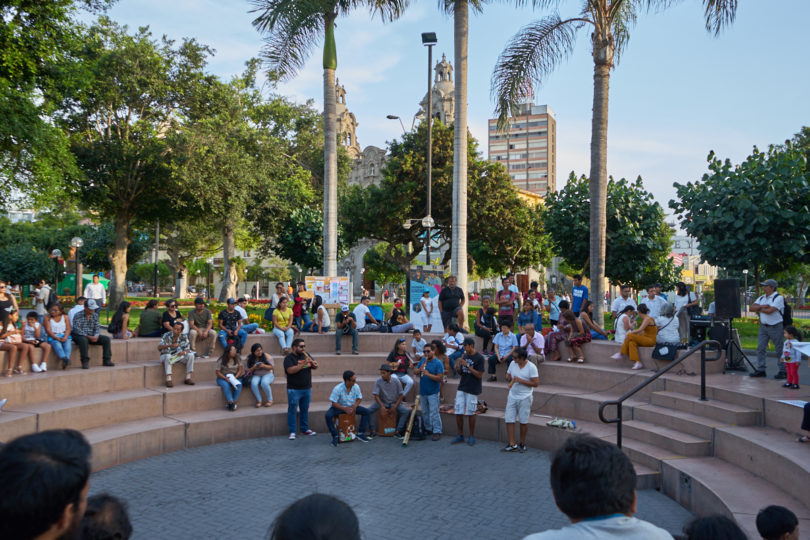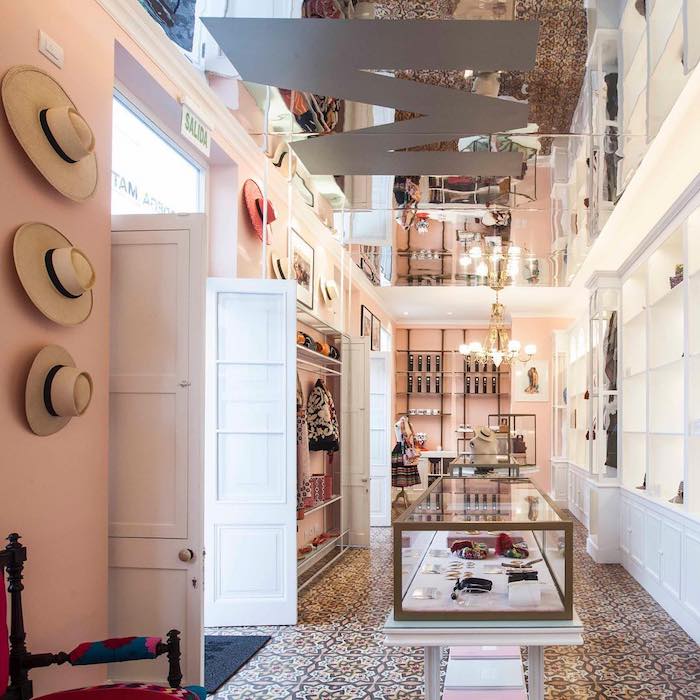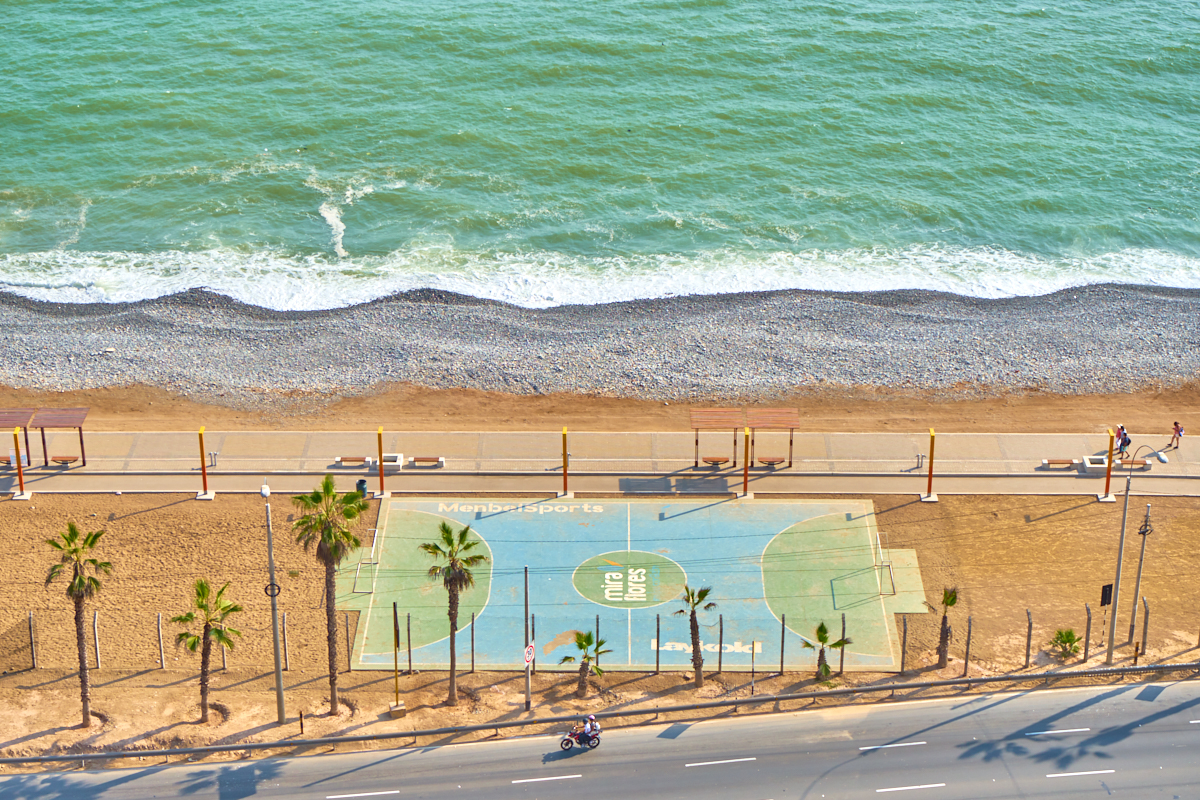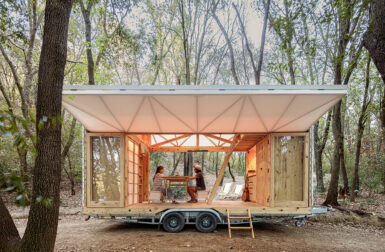“Look at the flowers,” Ana Cecilia Vidal told me when I arrived at her hotel, the Aloft Lima Miraflores, in Peru.
“Yes, I’ve been admiring,” I assured her. After a drab Winter in New York, the upscale neighborhood of Miraflores, with its landscaped plazas, ice cream shops, flea markets, stone fountains and palm trees, seemed even more teeming with life than Manhattan. I soaked in the colors. I even put on a flowery skirt.
“It’s what Miraflores means,” she replied, “look at the flowers.”
That small conversation became a primer for how I would see this part of Lima, Peru over the next week. Miraflores, the region bordered by Barranco in the South and the Pacific Ocean in the West, is perhaps one of the affluent neighborhoods in Lima, Peru. But the reason you should visit Miraflores isn’t because it’s wealthy, its parks so trimmed: this Ciudad Heroica or “Heroic City,” a designation it earned during the War of the Pacific, is where 8.7 million people reside beside ancient ruins, modern boardwalks, open-air food courts, a park for romantics, and even the 8th best restaurant in the world.
WHERE TO VISIT

Musicians draw an enthusiastic crowd here at Parque Kennedy in Miraflores. Photo by Cullen Fairchild.
At the epicenter of Miraflores is Parque Kennedy, a well-placed public space with a playground that attracts local families and a multitude of benches for elderly men and women to gather and people watch.
The park is famous for its resident cat population, but it’s also a place for social gatherings, and where musicians often rally a lively crowd. While strolling through flowerbeds, grab a churro (fried dough stick) or picarone (fried squash and sweet potato donut), or slurp on some chicha morada (a juice made from purple corn, cloves, cinnamon and sugar) from the various local food stands here. When you’re recharged and satiated, go thrift shopping for knitted sweaters, bags and scarves at the flea market which is set up daily from the early afternoon to late at night, and where local merchants are always happy to chat with you about where you’re from and what you’re hoping to see.

Larcomar, a cliffside shopping mall, along the El Malecón coastal walkway. Photo by Cullen Fairchild.

There’s views of the Pacific Ocean at Larcomar and all along the El Malecón path. Photo by Cullen Fairchild.
Another attraction is Larcomar, which touts itself as “the only shopping center located on a cliff with a spectacular view of the Pacific Ocean.” Atop Larcomar is Alfred Salazar Park and El Malecón, Lima’s scenic clifftop walkway. There are several restaurants in the region of Larcomar with magnificent ocean views, but if you’re looking for something more low-key, I’d recommend walking along El Malecón up north towards the “Parque del Amor” (Park of Love).

El Beso, a sculpture by Victor Delfin at Parque del Amor, depicts the sculptor and his wife kissing. The park is particularly crowded on Valentine’s Day and is a popular spot for locals to go on dates and even get married. Photo by Cullen Fairchild.
Here you’ll find “El Beso,” a large sculpture depicting the sculptor Victor Delfin and his wife, kissing. In the name of romance, the names of famous couples are inscribed into the park’s Antoni Gaudi-like mosaic walls, such as the literary love legends Romeo and Juliet.

Along El Malecón, you might see surfers riding the waves, people playing basketball, or even paragliding above you. Photo by Cullen Fairchild.

Puente “Mellizo” Villena Rey, a single arched bridge by the Pacific Ocean, links public parks in the South to the famous Parque del Amor in the North. Photo by Cullen Fairchild.
The cliffside walkway, El Malecón, passes plenty of parks from Parque Domodossola in the South to Parque Intihuatana up north, many with flower gardens and sculptures by Peruvian artists. If you’re headed to Parque del Amor you’ll pass through the single arch pedestrian bridge, Puente Villena Rey.
Notable mentions: Lugar de la Memoria, la Tolerancia y la Inclusion Social (The Place of Memory, Tolerance and Social Inclusion), or LUM, an exhibition space exploring the terrorist conflicts in Peru from 1980-2000 // Huaca Pucllana, the Incan remains of a seven-stepped clay and adobe pyramid from 200-700 A.D, with an on-site restaurant
WHERE TO EAT
Along with all the street food along Parque Kennedy, you can find elevated fine-dining at chef Mitsuharu Tsumara’s Maido, ranked the 8th best restaurant in the world. The colorful Peruvian-Japanese dishes are a journey through Japanese Nikkei cuisine with local infusions.

We enjoyed a fresh bowl of ceviche topped with fried calamari at Agallas Cantina Cevichera, a vendor at Mercado Nº 28. Photo by Cullen Fairchild.
A friendly and accessible dining option that’s perfect if you’re trying to hang out and enjoy the sunshine is Mercado Nº 28, which draws its inspiration from the well-loved Chelsea Market in New York. This open-air food court has 18 permanent food stands featuring well-known Peruvian chefs and first-time entrepreneurs, all vying to serve you everything you might want, from fried chicken to sushi to paella.
Notable mentions: Amaz for Amazonian-inspired cuisine // Punto Azul for fresh, generous servings of ceviche on a sunny family-friendly patio // Manolos for their famous churros in vanilla, chocolate or sugar frosting // Agora Arte y Café for a coffee break or casual workspace with a beautiful view of Parque Kennedy.
WHERE TO SHOP

Dédalo, a designer art and artisanal craft shop, in the nearby Barranco neighborhood, is housed in a beautiful colonial home. Photo by Cullen Fairchild.

Dedalo’s gallery space also leads to a quiet, open courtyard at the back. Photo by Cullen Fairchild.

On Wednesday evenings, this charming, secluded space turns into an upbeat event venue with pizza and live music. Photo by Cullen Fairchild.
Dédalo, about a 15 minute walk from the centre of Miraflores in the Barranco neighborhood, is one of Lima’s most distinguished craft and design stores, with alpaca scarves and decorative pieces, kids toys and Peruvian designer jewelry. The gallery space serves as a hallway connecting the store to a serene, shaded courtyard with a cafe, where on Wednesday evenings, there’s pizza and live music.

Photos from Museo Mate.

Photos from Museo Mate.
MATE – Museo Mario Testino is a contemporary art and photography museum owned by renowned photographer Mario Testino with a design store, Bodega Mate, dedicated solely to fashion. Venezuelan jewelry designer Monica Sordo, the store’s curator, picked pieces from over 30 designers across 9 Latin American countries to showcase here.
AYNI is the brainchild of two women—Laerke Skyum from Denmark and Adriana Cachay from Peru—who wanted to fashion high-end Peruvian materials such as baby alpaca wool and pima cotton into a minimalist fashion line with Danish aesthetics. They first launched in Paris in 2009 and have presented their luxury fashion collections all over the world, with a showroom right here in Miraflores.
WHERE TO STAY

Aloft Lima Miraflores is part of Marriott’s umbrella, geared towards the younger traveller. Photo by Cullen Fairchild.

At night, Bar XYZ turns the communal lobby at Aloft Lima Miraflores into a bustling entertainment spot.
We loved staying at the Aloft Lima Miraflores—at an affordable $92/night, it exudes a young, communal vibe, with people working in the hotel’s lobby in the day, and then getting a drink and winding down at night. The hotel shares the street with some of our Miraflores favorites, such as Mercado Nº 28, Puku Puku Small Batch Peruvian Coffee, and an adorable pastry shop inside a cozy white house, called Miss Cupcakes.

The Museo de Arte Contemporáneo in the Barranco district bordering Miraflores is just a 15 minute walk away and well worth the visit, even if it’s just to admire the sculptures along the museum’s public walkway. Photo by Cullen Fairchild.

If you make a wish and then hold your breath to cross the Bridge of Sighs, the locals say that your wish will come true! Photo by Cullen Fairchild.
The hotel is a stone’s throw away from all of the main attractions in Miraflores mentioned above. It’s even close to the nearby Barranco district, where we spent an evening visiting the Museo de Arte Contemporáneo, walking across the Bridge of Sighs (make a wish here!) and getting a burger and emoliente (an herbal drink of toasted barley, flax seeds, dried horsetail herb, dried grass, llantén or plantain leafs, lemon and honey, which we topped off with an additional scoop of sticky aloe vera) from a local street vendor. As with many things in Lima, the best part was chatting with the locals while enjoying the food that they’ve freshly prepared for us.
Final Thoughts
We’ve heard many experiences of people who stop in Lima for a day before heading to Machu Picchu. We did the same by taking a flight from Lima to Cusco and staying at the Palacio del Inka for two days to adjust to the altitude. We then drove over to Tambo del Inka in Urumamba (with the most amazing indoor pool I’ve ever seen, hidden in the trees). From there, we took the Inca Rail (the hotel has a private train station) to arrive at Machu Picchu.
While much has been said about Machu Picchu, more should be said about Lima, and in particular, the Miraflores district. We didn’t regret not seeing more of Machu Picchu, but we definitely wished we had more time to explore the neighborhoods in Lima, and to frolic in the gardens of Miraflores. There’s plenty of flowers to be seen here, that’s for sure, but if you want more to look at, there’s more Miraflores can offer: coastal bridges, sculptures, public parks, abundant street food and Incan ruins have found a way to merge seamlessly into the veins of this city. Unlike Machu Picchu, which is not in use apart from as a heritage attraction, Miraflores is very much alive. If you want to feel the Peruvian spirit, come here, and stay longer.
If you’ve traveled to Miraflores and have any favorite spots or recommendations, let us know below so we can share—and also check it out ourselves the next time we’re there!



































